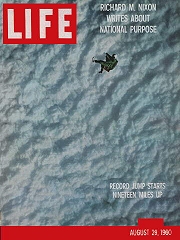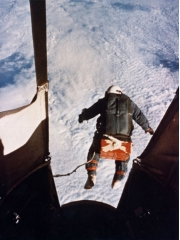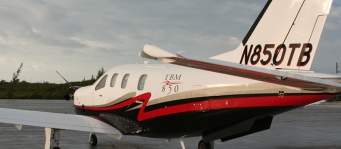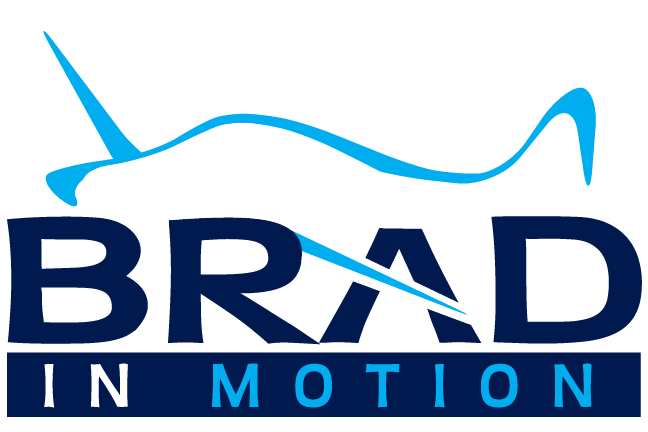

Several months ago, my father introduced me to a friend of his from the veterans association. To say this individual was simply a fellow pilot would be an understatement. He was actually the very first man in space and the first man to reach the speed of sound without an aircraft. He earned these distinctions by jumping out of a hot air balloon from an altitude of 102,800 feet (19 miles high). He has also set the record for the highest balloon ascent, the highest parachute jump, and the longest drogue-fall (14 min) from a balloon. In addition to these accomplishments, he also has a vast amount of experience flying more types of fixed wing aircraft than I can count. He flew 483 missions over Vietnam during his three tours of duty and was a prisoner of war for several months after being shot down during one of these missions. So, who is this aviator who’s a member of the National Aviation Hall of Fame? His name is retired US Air Force Colonel Joe Kittinger.
A few weeks ago, I had the honor of taking Colonel Kittinger on a flight. I met him, along with my father, over at Showalter Flying Service at the Orlando Executive Airport. We met in the lobby and headed to my Cirrus SR22GTS Aircraft waiting on the front ramp. I conducted my routine pre-flight checks and briefed Joe and my father on the flight. Soon we were fired up and taxiing out. I set the GPS system for Ft. Pierce as we had mutual business interests we planned on pursuing there that day. We lined up at the hold short line and I soon heard the familiar voice of my favorite air traffic controller at ORL come over the radio… “N225HL – Cleared for take-off on runway 25”. A few seconds later, we were whizzing down the runway, mentally running through cross-checks to make sure everything was in good order as we lifted off the ground. Shortly after take-off, we were sent up to 4,000 feet and given a few quick turns that took us directly over the top of Orlando International Airport (MCO). It’s a really neat experience for anyone reading this who’s never transitioned a busy airport from overhead. Looking down, you see lines of commercial airliners arriving and departing and the onboard TCAS (traffic collission awareness system) screen is filled with their images. It’s been a busy flight so far with little time for chit-chat up until this point.
Soon, we transitioned to the on the other side of MCO and things calmed down almost immediately. We initiated a climb to 8,000 feet and turned on course as soon as we were clear of all of the airline traffic. I turned to Joe and asked if he’s up for taking it for a spin. He cracks a smile, which is aviator sign-language for “absolutely”. Joe flies for the next hour. He is certainly a pro – he quickly gets the feel of the plane and flies it like it’s riding on rails. He comments a number of times about how impressed he is with how the plane handles. He tells me that it feels just like flying an F16 fighter jet and that if I can fly this, I could certainly fly one of those as well. Very cool! Of course, the F16 has a bit more speed and a lot more weapon systems than the Cirrus, but it’s a neat feeling knowing that the flight characteristics are similar. Joe also comments on the Avidyne avionics as I run through a demonstration of each of the functions. We’ve got weather, traffic collision, live winds, airport diagrams, approach procedures, terrain avoidance, engine monitors, etc. – Basically, the whole kitchen sink and then some. When it comes to systems that can save lives, we didn’t skimp one cent and ordered the aircraft fully equipped with every conceivable option. I think it surprised him how much advanced technology has made its way into smaller corporate / personal aircraft. He was looking at the systems commenting on how we’ve actually got more sophisticated avionics than what’s available on many of the commercial and military planes he’s flown. Again, another “very cool” moment!
As we continued our flight southbound, afternoon winds from a weather system in the vicinity began kicking up. The crosswind component on the runway at Fort Pierce was right at the maximum allowable for the Cirrus. This was too close for comfort. Could we have made the landing safely? I’m 99% sure we could have… but… a good pilot knows that it’s better to side with caution rather than take unnecessary risks. There’s no business meeting worth risking my life nor the life of my passengers over, period. So, we decided to divert and head back to Orlando.
As we arrived back into Orlando, Colonel Kittinger mentioned that there was going to be a ceremony at the Veteran’s Hospital in which an Air Force fly-by would be conducted in the next few weeks. He asked if I’d mind flying the course so that he could convey the heading information to the Air Force fighter jet pilots who would actually be piloting that flight. I coordinated with the Orlando Executive Airport control tower (who was fantastic in helping with this request!) and we got the heading he needed. It was a good feeling knowing this little side benefit came out of our flight together.
Soon, we were lined up runway 25 gliding over the lake just shy of the airport. I watched the airspeed, winds (it was gusty!), and our position relative to the runway. A few seconds later, we touched down gently and completed the flight successfully. The sun was setting as we taxied back in to the Showalter ramp and we soon parted ways. I drove home thinking back to what a great flight we had that day. The flight itself may have been routine, but getting to fly with an aviation legend made it very special indeed.
Shown in the photos at the top of this post: (1) The cover of Life Magazine featuring Joe Kittinger’s famous jump. (2) An image from the balloon looking down showing Joe Kittinger descending after his jump.









